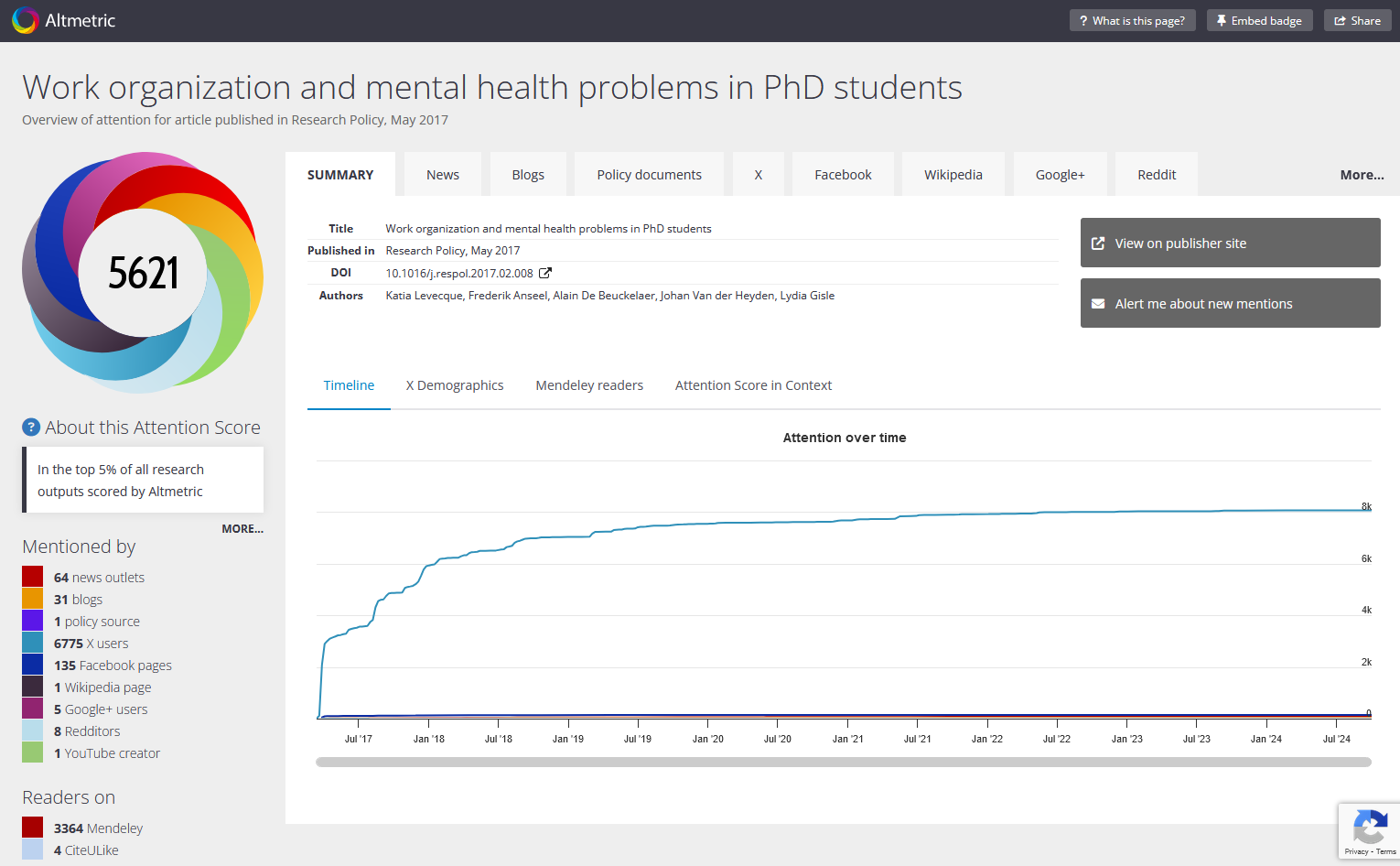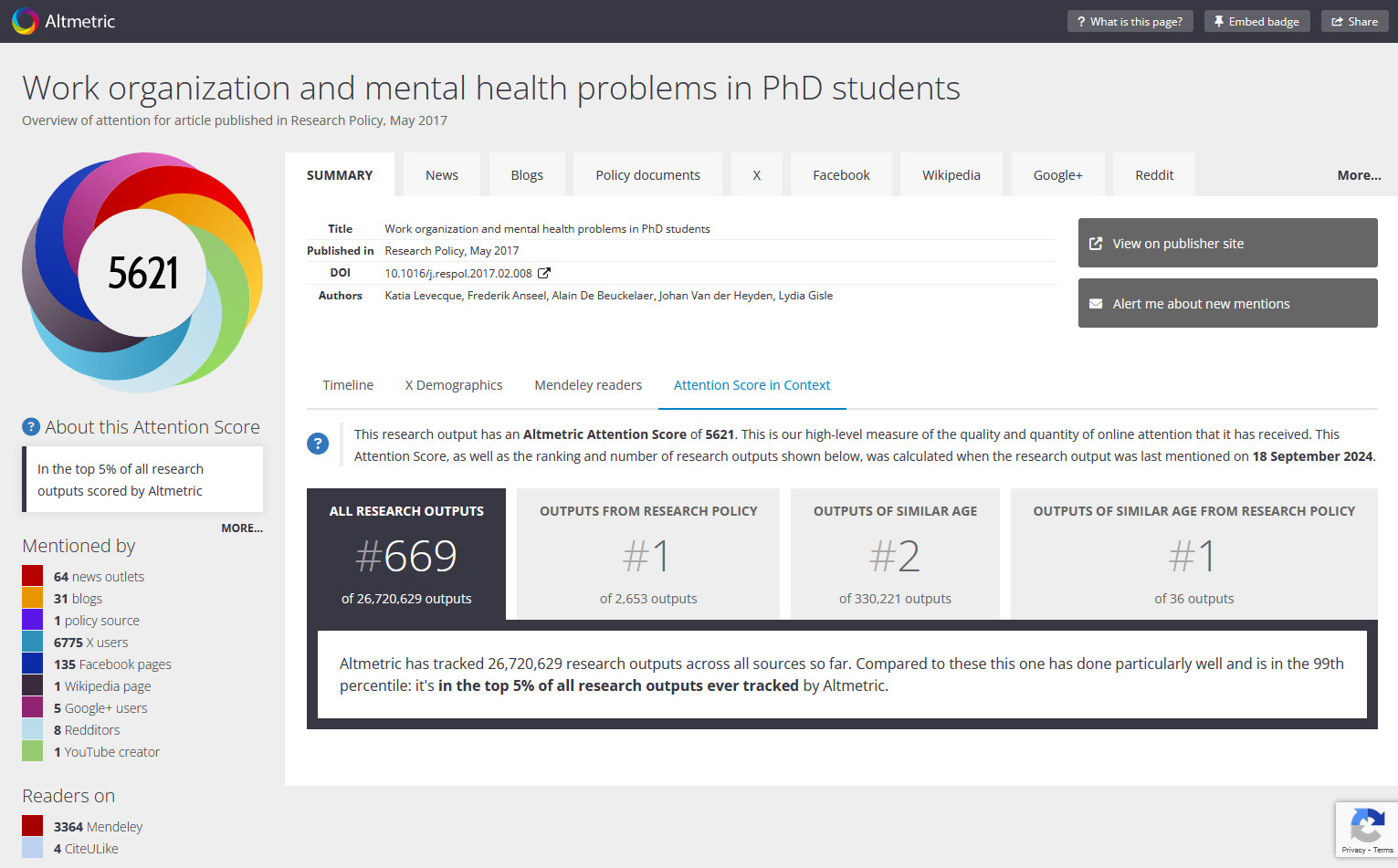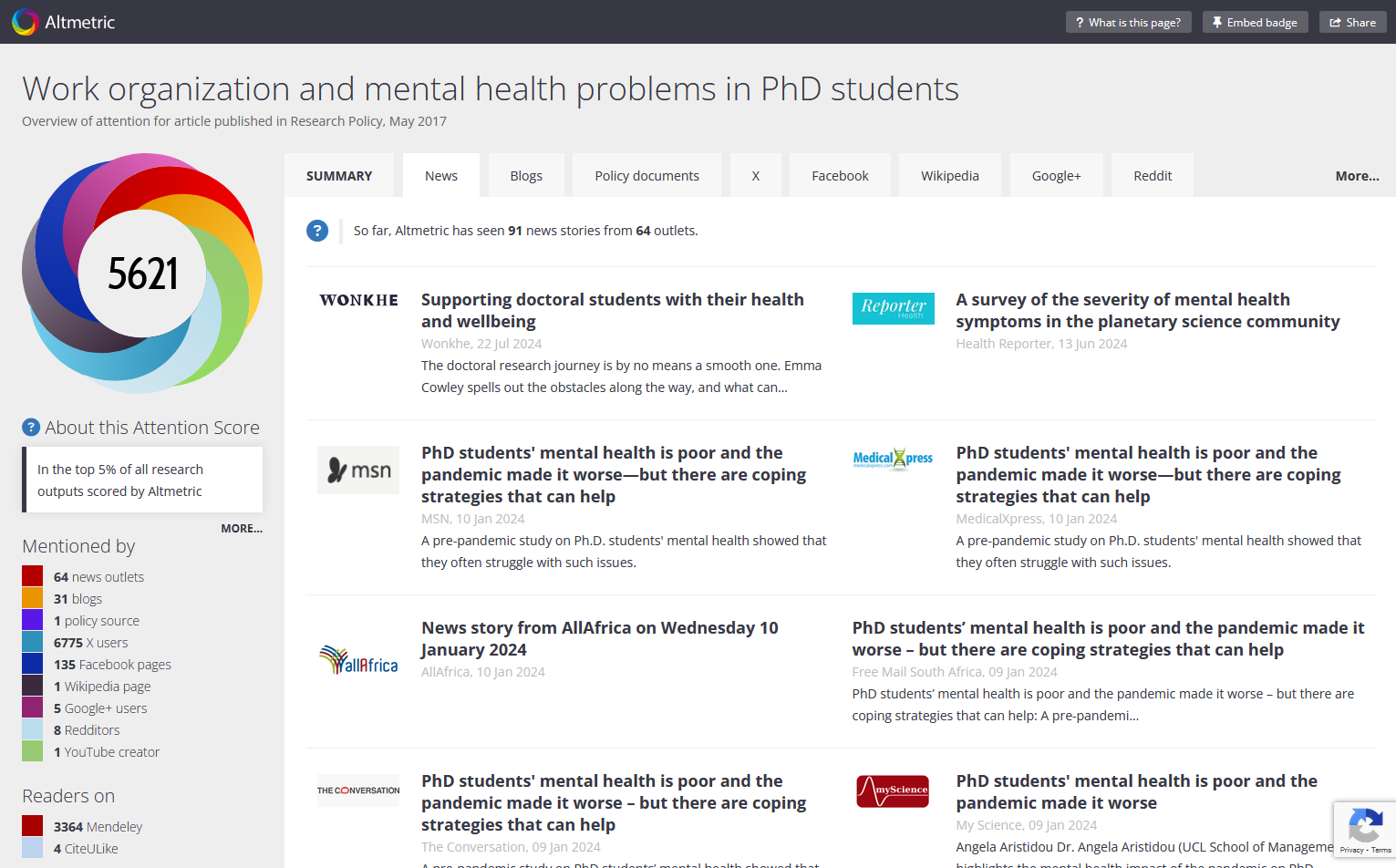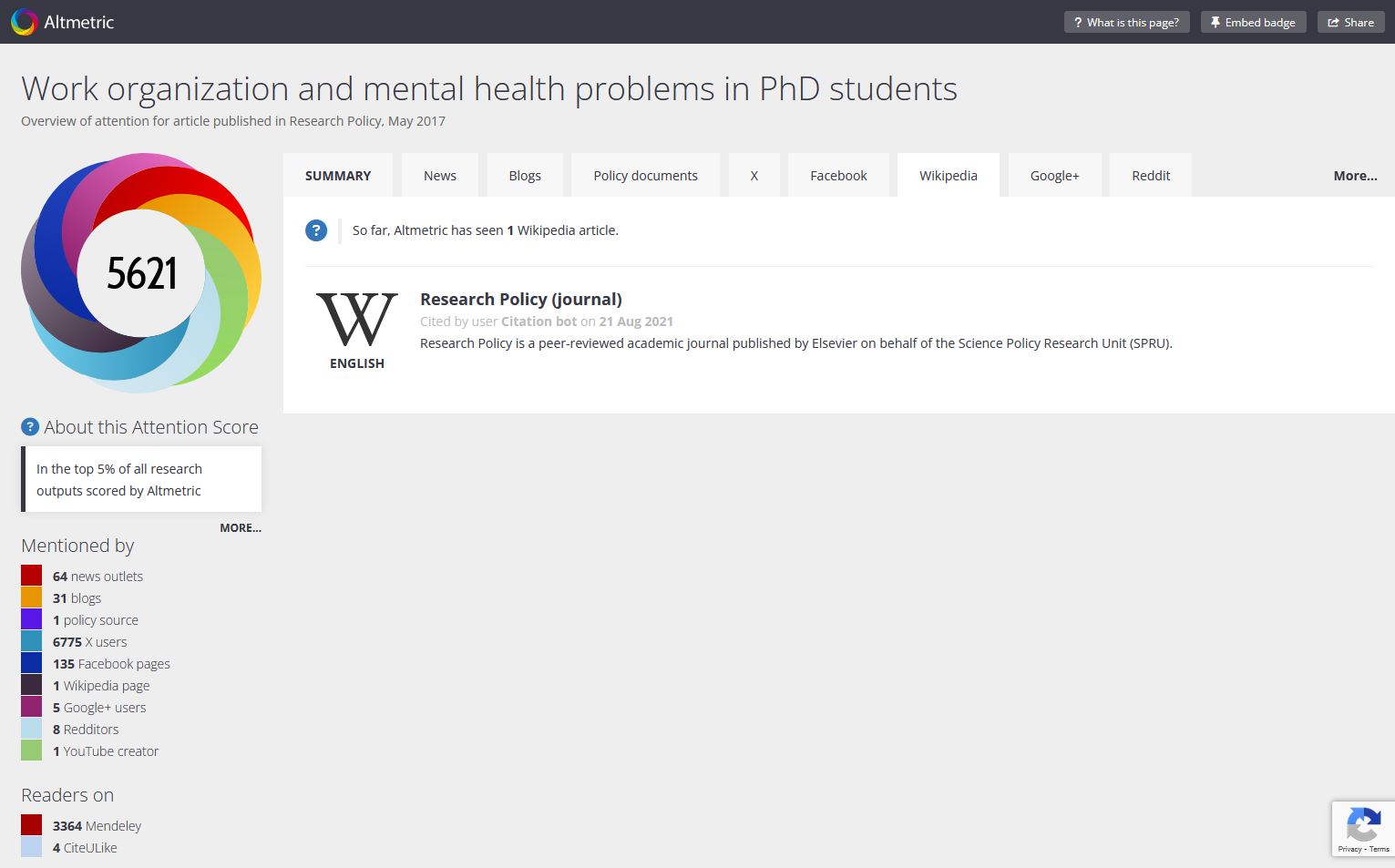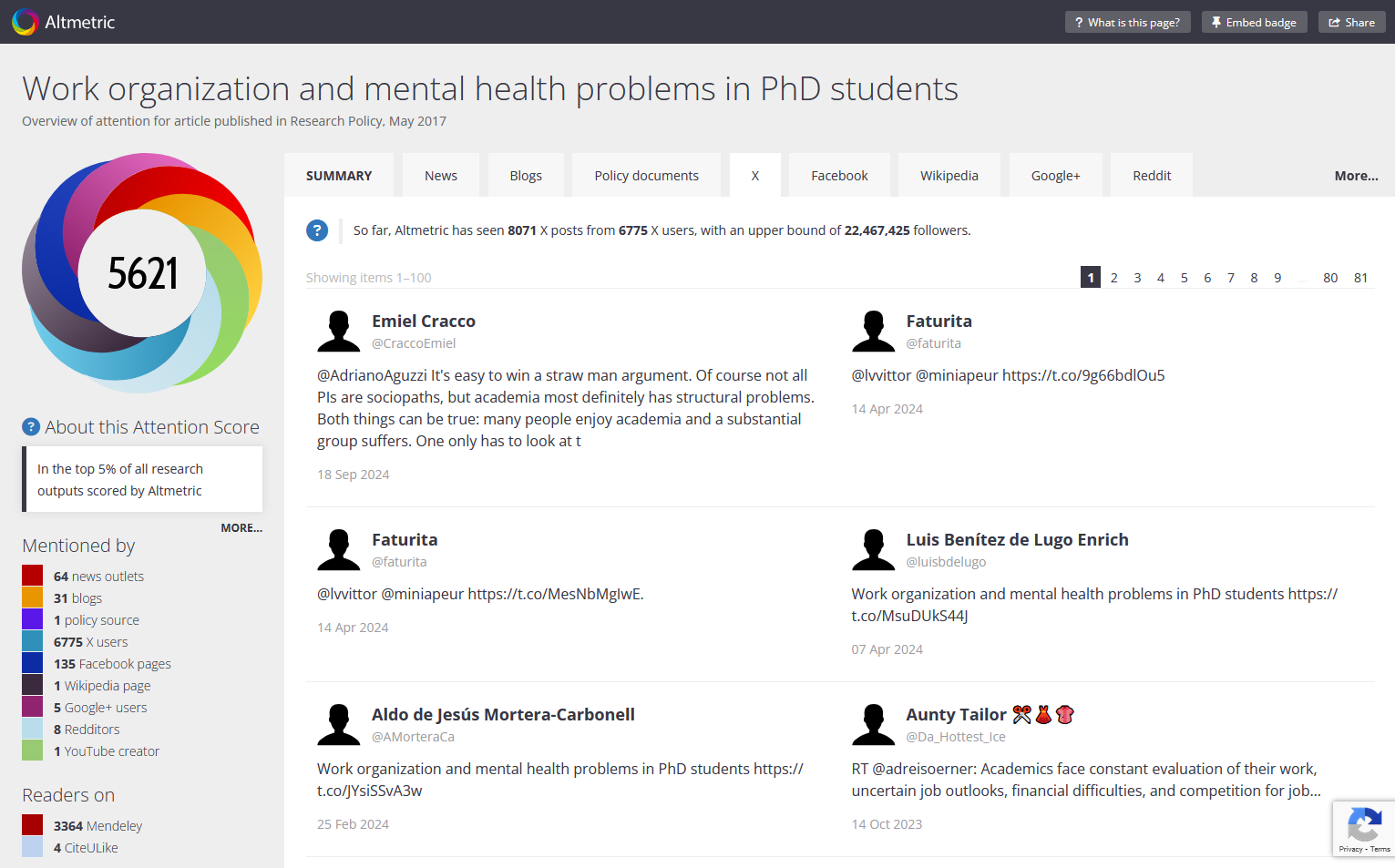Introduction
The Altmetric database consists of more than 130 million mentions on nearly 33 million research outputs (as of June 2021), including journal articles, datasets, images, white papers, reports, and more. Altmetric is able to track mentions of research outputs (e.g., articles, chapters, etc.) if the outputs have an identifier (e.g., DOI, RePEc, etc.) and if they are mentioned in a source tracked by their text mining algorithm. The sources tracked include public policy documents, patents, mainstream media, blogs, online reference managers, Wikipedia, post-publication peer-review platforms, social media, as well as citations in the scholarly literature.
What are altmetrics?
Altmetrics are usually simple counts of mentions of a particular scholarly output (e.g., journal article, book chapter, dataset, etc.) in contexts beyond the scholarly literature. Contexts of interest often include mainstream media, resources like Wikipedia, blogs, policy documents, and patents. The coverage depends on the provider, of which there are two: Altmetric (owned by Digital Science) and PlumX (owned by Elsevier).

